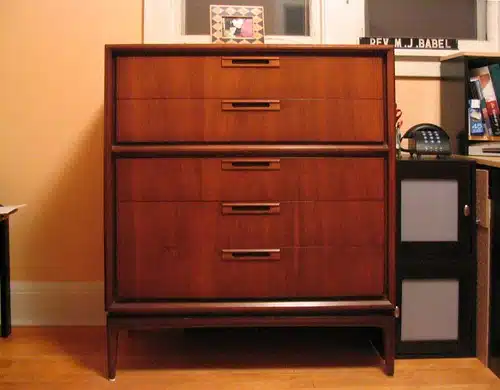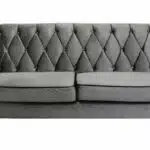Purchasing furniture can be a daunting task for many individuals, especially those who lack experience in the field of home furnishing. With an endless array of styles, materials, and designs to choose from, it can be overwhelming to select the right furniture that matches your needs and preferences. However, with the right approach and guidance, buying furniture can become a fun and rewarding experience.
This article aims to provide expert advice on how to buy furniture that fulfills your requirements without breaking the bank. From understanding your personal style to choosing the appropriate size and material, we will cover every aspect of furniture shopping that you need to know. Whether you are looking for a complete room makeover or just adding some finishing touches to your existing decor, this guide will help you make informed decisions and create a comfortable living space that reflects your personality.
Assessing Your Needs And Budget
As the old adage goes, “home is where the heart is.” It’s no secret that a cozy and inviting home can make all the difference in your overall well-being. When buying furniture, it’s important to assess your needs and budget. Budgeting tips can help you spend wisely and avoid overspending on items that you may not need.
Start by identifying priorities for each room. What are the must-haves? What are some nice-to-have items? Consider your lifestyle and habits. Do you have children or pets? Will the furniture be used frequently or mostly for decoration? These questions can help guide your decision-making process.
Once you’ve identified your priorities, create a budget that works for you. Don’t forget to include additional expenses such as delivery fees and assembly costs. Stick to your budget as much as possible, but also be open to investing in quality pieces that will last longer. By assessing your needs and budget, you’ll be able to make informed decisions when it comes to purchasing furniture that will transform your house into a welcoming home.
Identifying priorities and creating a budget are crucial steps in buying furniture. However, determining your personal style is just as important. The next section will help you explore different styles and find inspiration for creating a space that reflects who you are.
Determining Your Personal Style
- Identifying your aesthetic is an important step in determining your personal style when purchasing furniture.
- It is important to consider the style of your home, the atmosphere you want to create, and the elements you want to emphasize when selecting furniture.
- Exploring different styles can be helpful in finding a look that best matches your preferences.
- It is a good idea to research popular trends, review magazine articles and catalogs, and look at photos of rooms with furniture similar to what you are searching for.
Identifying Your Aesthetic
To identify your aesthetic when buying furniture, it’s important to consider color psychology. Colors can evoke different moods and emotions, so choose shades that align with the atmosphere you want to create in your space. For instance, if you want a calming and relaxing environment, go for soft blues or greens. If you want a lively and energetic vibe, opt for bright yellows or oranges.
Another way to define your aesthetic is by incorporating vintage pieces into your decor. Vintage furniture pieces add character, charm, and depth to any space. They provide a sense of history and nostalgia that cannot be replicated with modern furniture. You can mix and match vintage pieces with contemporary ones to create a unique look that reflects your personal style.
Ultimately, identifying your aesthetic when buying furniture boils down to figuring out what speaks to you personally. It’s about finding furniture items that resonate with you on an emotional level and represent who you are as a person. By taking the time to consider color psychology and incorporating vintage pieces into your decor, you will be well on your way towards creating a space that feels like home.
Exploring Different Styles
Now that we’ve discussed the importance of color psychology and vintage pieces when determining your personal style, it’s time to explore different styles that you can mix and match to create a unique look in your home. Mixing styles is a great way to express your personality and create a space that truly reflects who you are. It’s important to find inspiration from various sources such as magazines, websites, or even other people’s homes.
One popular style is modern minimalism, which emphasizes simplicity and clean lines. This style incorporates neutral colors such as white, gray, and black with pops of color or metallic accents. Another style is bohemian chic, which combines bold colors, patterns, and textures with natural elements like plants or woven baskets. This style feels relaxed and eclectic while still being stylish. A third option is traditional elegance, which features classic furniture pieces like wingback chairs or chandeliers paired with rich fabrics like velvet or silk. This style exudes sophistication and luxury.
When exploring different styles, it’s important to keep in mind that there are no hard rules when it comes to decorating your home. Don’t be afraid to experiment with different combinations until you find what works best for you. A good starting point is finding one piece of furniture or decor item that speaks to you personally and building around it. By mixing styles and finding inspiration from various sources, you’ll be able to create a space that not only looks beautiful but also feels authentic to who you are as an individual.
Measuring Your Space
To ensure that the furniture you buy fits perfectly into your space, it is important to measure accurately. Measuring accuracy is crucial in achieving a cohesive and functional look for your home. While it might seem like a simple task, measuring can be tricky if not done properly.
To begin, start by measuring the length and width of your room. This will give you an idea of how much floor space you have to work with when choosing furniture pieces. It’s important also to measure any alcoves or recesses in your space as these areas can be utilized for space saving solutions such as built-in shelves or cabinets.
The next step is to measure any existing furniture pieces that you plan on keeping in the room. This will help determine which size and style of new furniture will complement the existing pieces and create a cohesive look. Once you have all your measurements, it’s time to start shopping for furniture that fits perfectly into your space. Remember, taking accurate measurements saves time and money in the long run!
When choosing the right type of furniture for your space, there are several factors to consider. Size and scale are key elements when selecting furniture pieces that fit well within a room. Additionally, functionality should also be taken into consideration; choose versatile pieces that serve multiple purposes such as storage ottomans or sofa beds. Finally, consider the overall style of your home when selecting new furniture; choose items that complement your existing decor and add personality to your living spaces. By following these tips, you’ll be able to find the perfect furniture pieces that suit both your needs and personal taste.
Choosing The Right Type Of Furniture
As you’ve measured your space, it’s now time to think about the type of furniture that will work best for it. For example, if you have a small living room, you might want to consider a sectional sofa that can be arranged in different ways depending on your needs. Alternatively, if you’re furnishing a large dining area, you could opt for a long table and bench seating or mix and match styles with chairs.
When deciding on the right type of furniture, it’s important to consider not only the size and shape of your space but also the trending furniture designs. You want to make sure that the pieces you choose will not only fit but also complement your decor style. For instance, if you prefer a modern aesthetic, look for sleek lines and minimalist designs. On the other hand, if you love traditional decor, go for ornate details and classic shapes.
Mixing and matching styles can create an eclectic look that adds interest to any room. However, it’s essential to strike a balance between different design elements so that your space doesn’t look cluttered or chaotic. When mixing styles, choose one dominant style as your base and then add accents from other complementary styles. As you decide on the material and fabric of your furniture pieces in the next section, keep in mind how they will fit into this overall design scheme.
Deciding On The Material And Fabric
When buying furniture, one of the most important decisions you’ll make is deciding on the material and fabric. These choices can have a big impact on the look and feel of your furniture, as well as its durability and comfort. Here are some things to consider when making these choices.
Choosing upholstery: When it comes to upholstered furniture like sofas and chairs, one of the most important decisions you’ll make is what kind of fabric to choose. Some popular options include leather, linen, cotton, and velvet. Each has its own unique look and feel, so it’s important to think about what will work best for your home and lifestyle. For example, if you have pets or young children, you may want to avoid fabrics that are easily stained or damaged.
Picking the right wood: If you’re looking for wooden furniture like tables or dressers, there are also plenty of options to choose from. Some popular woods include oak, pine, cherry, and mahogany. Each type of wood has its own unique grain pattern and color, so it’s important to think about how it will fit in with your existing decor. You’ll also want to consider factors like durability and maintenance requirements when making your choice.
- Consider any allergies or sensitivities when choosing upholstery
- Think about how much traffic the piece of furniture will get before selecting a fabric
- Look for sustainably sourced wood options
When it comes to buying furniture, choosing the right materials and fabrics can be a daunting task. However, by considering factors like comfort, durability, style preferences,and maintenance requirements,you can make informed decisions that will lead to long-term satisfaction with your purchase. In the next section we’ll explore how to evaluate quality and durability in furniture without breaking the bank.
Evaluating Quality And Durability
As the saying goes, “You get what you pay for.” However, when it comes to furniture shopping, many people have common misconceptions about the relationship between durability and price. Some believe that expensive furniture is always of better quality than cheaper options, while others think that a lower price means a shorter lifespan. In reality, neither of these assumptions are entirely accurate.
Durability is not necessarily synonymous with high cost. While it’s true that some more expensive materials may be stronger and last longer than their cheaper counterparts, this isn’t always the case. In fact, many mid-priced pieces can be just as durable as their pricier alternatives. When evaluating furniture for durability, it’s important to consider factors such as construction techniques and materials used rather than relying solely on price.
When shopping for furniture, it’s essential to strike a balance between quality and affordability. While it may be tempting to opt for the cheapest option available, this can end up costing you more in the long run if the piece needs to be replaced sooner than expected. On the other hand, investing in an overly expensive piece doesn’t always guarantee superior quality or longevity. Instead of fixating on price alone, take time to evaluate each piece based on its individual merits.
Moving forward into evaluating your potential furniture purchases further, checking for comfort and functionality should also take priority over price or brand name.
Checking For Comfort And Functionality
Finding comfort and prioritizing function are essential aspects of buying furniture. When shopping for furniture, it is important to consider how comfortable it is for your needs. For example, if you plan on spending a lot of time sitting on a sofa, you will want to ensure that it has good back support and is deep enough to accommodate your height. Similarly, when purchasing a bed, make sure that it provides adequate support for your body type and sleeping position.
Functionality should also be a top priority when shopping for furniture. Consider how the piece will be used and whether it can serve multiple purposes. For instance, if you live in a small apartment, a coffee table with storage space underneath can provide both functionality and style. Additionally, think about the durability of the piece and whether it can withstand regular use over time.
By finding comfortable and functional pieces, you can create a living space that not only looks great but also serves your needs. Remember to take the time to test out different items before making a purchase and read reviews from other customers who have purchased similar products. With these tips in mind, you can find furniture that meets both your aesthetic preferences and practical requirements.
Transition: Now that you have found comfortable and functional pieces for your home, the next step is selecting the right color and finish to complement your existing decor.
Selecting The Right Color And Finish
When it comes to selecting furniture for your home, choosing the right color and finish is essential. Color psychology plays a crucial role in how we feel and interact with our surroundings. Colors can evoke different emotions and moods, so it’s important to consider what kind of atmosphere you want to create in a room before picking out furniture colors.
For instance, if you’re looking to turn your bedroom into a calming oasis, then you might want to opt for soothing shades of blue or green. On the other hand, if you’re trying to add some energy and excitement to a living space, bold hues like red or orange can do the trick. Don’t forget about matching accessories either! The right throw pillows or curtains can help tie everything together and make your furniture pop.
While selecting the perfect color and finish is important, don’t forget about sustainability too. Consider eco-friendly options that are made from sustainable materials or have been upcycled from existing pieces. By doing so, you’ll not only be helping the environment but also investing in long-lasting furniture that will stand the test of time. Keep these tips in mind when shopping for furniture, and you’ll be sure to find something that not only looks great but also fits your style and values.
Considering Eco-Friendly Options
After considering the right color and finish for your furniture, it’s time to think about the environmental impact of your choices. Did you know that the furniture industry is one of the largest users of wood in the world? In fact, according to a report by the World Wildlife Fund, up to 30% of all timber traded globally is illegal, leading to deforestation and habitat destruction. This means that choosing eco-friendly materials and sustainable manufacturing processes can make a significant difference in reducing our carbon footprint.
To help you make more environmentally conscious choices when shopping for furniture, here are three things to consider:
Materials: Look for furniture made from recycled or reclaimed materials such as wood or metal. Bamboo and cork are also great options as they are fast-growing and renewable resources.
Manufacturing Processes: Choose furniture that has been manufactured using sustainable methods such as using non-toxic adhesives or minimizing water waste during production.
Certifications: Look for certifications such as Forest Stewardship Council (FSC) or Cradle to Cradle (C2C) which ensure that products have been responsibly sourced and manufactured with minimal environmental impact.
By considering these factors, you can not only reduce your carbon footprint but also support companies that prioritize sustainability in their practices. Shopping eco-friendly can also mean shopping smarter, with many sustainable options being durable and long-lasting investments for your home.
As you continue your search for eco-friendly options online, don’t forget about shopping at brick-and-mortar stores where you can see and touch the furniture before making a purchase. Keep these considerations in mind as you explore different styles and designs – with a little research and effort, you can find beautiful pieces that are both stylish and sustainable.
Shopping At Brick-And-Mortar Stores
When it comes to buying furniture, one option is to shop at brick-and-mortar stores. There are many benefits to this approach, such as the ability to see and touch the furniture before making a purchase. It also allows for immediate delivery and eliminates any concerns about shipping costs or damage during transit. Another advantage of in-store shopping is the opportunity to work with knowledgeable sales associates who can help guide you through the purchasing process.
However, there are also some drawbacks to shopping exclusively at physical stores. One major issue is that you may not have access to as much variety as you would online. Additionally, brick-and-mortar stores often have higher overhead costs than online retailers which can result in higher prices. Finally, many consumers find that shopping in-person can be time-consuming and frustrating if they are unable to find what they are looking for.
As an alternative, shopping for furniture online offers many benefits of its own. For example, it allows consumers access to a wider range of products from all over the world. Online retailers also frequently offer lower prices due to their lower overhead costs compared with physical stores. Finally, online shopping offers convenience since you can browse and make purchases from anywhere at any time.
| Comparison of In-Store vs Online Shopping | In-Store Shopping | Online Shopping |
|---|---|---|
| Availability of Products | Limited | Unlimited |
| Price | Higher | Lower |
| Convenience | Requires travel | Can be done from anywhere |
Looking at the comparison table above shows that both methods of shopping have their pros and cons; however, we highly recommend exploring online furniture retailers as a way of expanding your options while also saving money and time.
Exploring Online Furniture Retailers
According to a recent survey, over 50% of furniture shoppers prefer to purchase their furniture online. The convenience and accessibility of online shopping have revolutionized the furniture industry, making it easier for consumers to find the perfect piece of furniture that suits their style and budget.
One of the benefits of customization is that customers can create a unique piece that fits their specific needs. With online retailers offering a range of customizable options such as color, size, and material choice, customers can design pieces that perfectly match their style and home décor. However, there are also risks associated with ordering furniture online. Customers should be aware of potential issues such as incorrect measurements or color variations due to differences in screen resolution.
When shopping for furniture online, it’s essential to compare prices and reviews from different retailers. Online stores often offer competitive pricing and discounts on popular items such as sofas or dining sets. Additionally, checking customer reviews can provide valuable insights into the quality and durability of certain products. Taking the time to research before making a purchase can save customers both time and money in the long run.
Comparing Prices And Reviews
When it comes to buying furniture, one of the most important factors to consider is price. With so many options available on the market, it can be overwhelming to compare prices and ensure that you are getting the best deal. However, there are a few strategies that can help you compare prices effectively.
Firstly, it is important to do your research before making a purchase. Look online for different retailers that sell the furniture item you are interested in and compare their prices. You may also find reviews from other customers who have purchased the same item, which can give you an idea of its quality and whether it is worth the price.
Another strategy for price comparison is to visit physical stores and take note of their prices. Some retailers may offer in-store discounts or promotions that are not reflected online. Additionally, you can speak with sales representatives in person to ask about any upcoming sales or if they are able to match a competitor’s price.
In addition to price comparison, user ratings can also be helpful when selecting furniture. Many online retailers allow customers to leave reviews of their purchases, which can provide valuable insight into the quality of the product and whether it meets expectations. Consider reading through these reviews before making a purchase to ensure that you are investing in a piece of furniture that will meet your needs and last for years to come.
When considering negotiating with sales representatives, keep in mind that this may not always be an option at every store or for every item. However, if you have done your research and found a lower price elsewhere, it may be worth asking if they are able to match or beat the competitor’s price. Be polite and respectful when speaking with sales representatives and remember that they are often willing to work with customers to make a sale.
Negotiating With Sales Representatives
When shopping for furniture, it’s important to be prepared to negotiate with sales representatives. Role playing scenarios with a friend or family member can be helpful in building confidence and practicing negotiation tactics before heading to the store. Remember that the goal of negotiating is not to win, but to reach a mutually beneficial agreement.
Common negotiation tactics include asking for discounts or freebies, pointing out any defects or damages, and discussing payment options. It’s also important to remain friendly and respectful throughout the negotiation process. Keep in mind that sales representatives have their own goals and quotas to meet, so finding a compromise that works for both parties is key.
By being prepared and using effective negotiation tactics, you can potentially save money on your furniture purchase. However, if negotiations do not go as planned, it’s important to know when to walk away and consider other options. In the next section, we will discuss how to arrange delivery and assembly of your new furniture.
Arranging Delivery And Assembly
Once you have purchased your furniture, the next step is to arrange for delivery and assembly. Most furniture stores offer delivery options, and it’s essential to choose one that matches your needs. Some stores provide free shipping, while others charge a fee based on the distance and weight of the item. You also need to consider the timeframe for delivery, especially if you need the furniture urgently.
When it comes to assembly, there are two options: hiring professionals or doing it yourself (DIY). Hiring professionals can be costly but ensures that the furniture is assembled correctly without any damage. On the other hand, DIY assembly tips are available online or provided by some manufacturers. DIY can be more cost-effective but requires patience, time, and basic skills in carpentry. It’s essential to read the instructions carefully before assembling and ensure that all necessary tools are available.
To make your life easier after delivery and assembly, here are two sub-lists of tips:
- Furniture placement: Consider where you want to place each piece of furniture before arranging for delivery. Measure doorways and hallways to ensure that they can accommodate larger items.
- Furniture care: Protect your investment by using coasters under glasses or cups when placing them on tables or desks. Avoid dragging heavy items across floors as this may cause scratches. Use felt pads under chair legs to prevent scratches on hardwood floors.
Now that you have arranged for delivery and assembly and know how to care for your furniture let’s move on to discussing how best to maintain it for longevity without causing damage.
Caring For Your Furniture For Longevity
To make the most out of your furniture and ensure longevity, it’s essential to take good care of them. As the popular saying goes, “a stitch in time saves nine.” The first step towards ensuring your furniture lasts long is by cleaning them regularly. Regular dusting with a soft, dry cloth can help remove dirt and prevent scratches on the surface.
Cleaning tips are not universal across all types of furniture. Ensure you read and follow the manufacturer’s instructions for specific cleaning techniques. For example, leather furniture requires special care as it is prone to cracking or discoloration when exposed to direct sunlight. In contrast, wooden furniture should be cleaned with a damp cloth, taking care not to use too much water that might cause damage.
Another way to extend your furniture’s life is by repairing any damages as soon as possible. Repairing techniques will vary depending on the extent of damage and type of material used in making the piece of furniture. Small scratches or dents can be easily fixed using wood putty or touch-up markers for wooden surfaces. However, if the damage is substantial, such as a broken leg on a chair or sofa, it’s best to contact a professional repair service.
By following these simple cleaning tips and repairing techniques, you can keep your furniture looking like new for years to come. Remember always to read the manufacturer’s instructions for specific cleaning procedures and seek professional help where necessary when repairing damages. With proper care, your furniture can remain functional and aesthetically pleasing for generations without losing value or quality over time.
Conclusion
When it comes to buying furniture, there are many factors to consider in order to make the best decision for your home. Assessing your needs and budget is essential before determining your personal style and measuring your space. Choosing the right type of furniture, material, and fabric can make a significant difference in both comfort and aesthetics. Don’t forget to compare prices and reviews, as well as negotiate with sales representatives to get the best deal possible.
Once you have made your purchase, arranging delivery and assembly should be done with care to ensure that everything arrives safely and is put together correctly. Finally, caring for your furniture for longevity is crucial in maintaining its quality over time.
As a home furnishing expert, I understand that buying furniture can be overwhelming at times. However, by following these steps and taking the time to carefully consider each aspect of your purchase, you will be able to make an informed decision that will enhance the comfort and beauty of your living space. Remember: good furniture isn’t just functional – it’s an investment in creating a welcoming atmosphere that reflects who you are as a person. So don’t be afraid to get creative with colors, textures, and styles that speak to you!
Image Credits
- “more furniture…” by 2fs (featured)





























